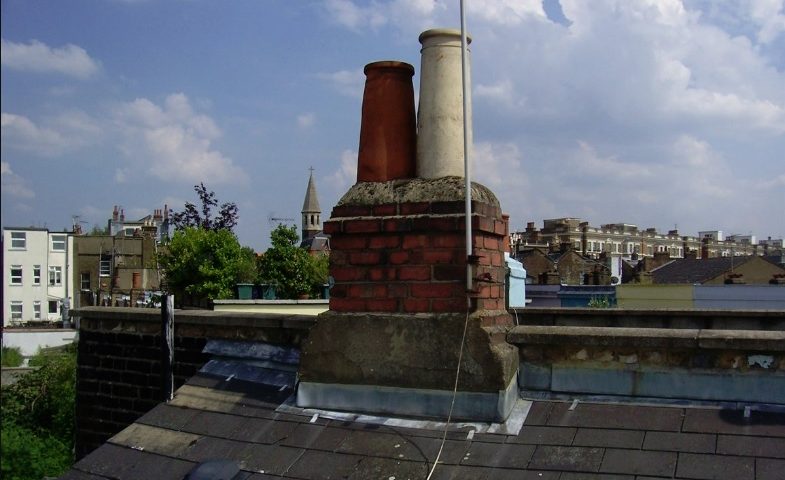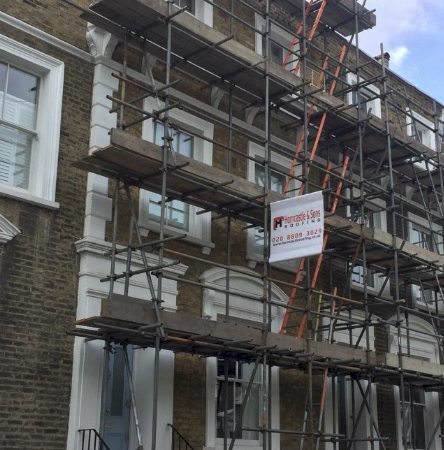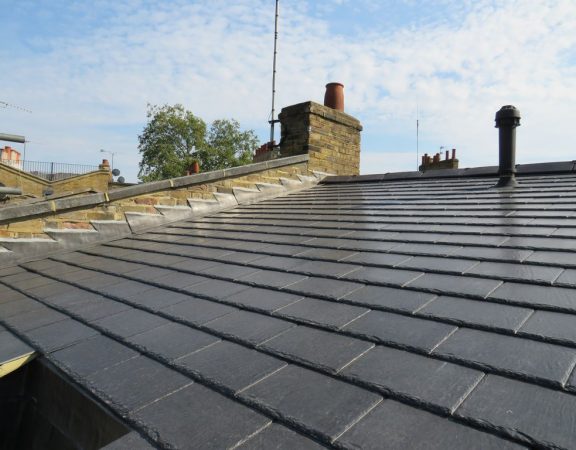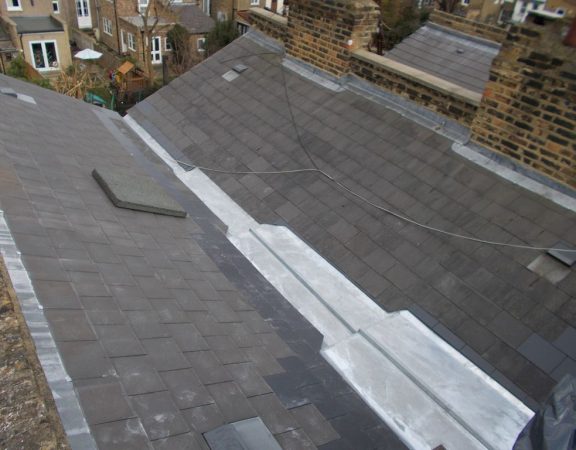In recent years, many homeowners in North London and nearby areas have reported issues with dampness in internal chimney breasts. As trusted roofing contractors in North London, we often see this problem stemming from poorly maintained chimney stacks, which are constantly exposed to the elements.
Common Causes of Chimney Damp
Damp in chimneys is typically caused by:
- Rainwater intrusion
- Condensation
- Salt contamination
Salt contamination is particularly common in older chimney breasts. It occurs when fossil fuels like coal, which contain salt minerals such as nitrates, chlorides, and sulphates, are burned in the fireplace. Over time, these salts settle into the brickwork and plaster. When the fireplace is no longer in use, these salts can absorb moisture from the air, creating what’s known as hygroscopic dampness. This is why damp patches often appear worse during wet weather.
Additional Factors Contributing to Damp
Other common causes of chimney damp include:
- Defective flashings at the chimney base
- Cracked or damaged mortar pointing
- Worn mortar flaunching
- Open chimney pots, which allow rain to enter
Solutions for Chimney Dampness
As experienced roofers in North London, we recommend addressing chimney damp issues promptly to prevent long-term damage. Here’s what can be done:
- Cap off chimney pots with the right terminals to stop water entry while maintaining proper ventilation.
- Repair damaged mortar, flaunching, and flashings to seal any cracks.
- For unused chimneys, consider sealing the stack with mortar or coping stones or even removing it down to roof level.
Regular chimney maintenance is essential for preventing dampness and protecting your property. If you’re facing chimney-related damp issues, don’t wait—our team of professional roofing contractors in North London is here to help with expert solutions tailored to your needs.
Get in touch today to ensure your chimney and roof are in top condition!






